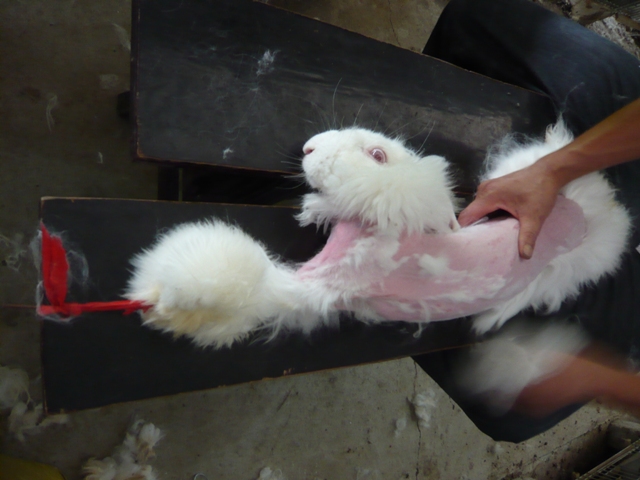A Look Inside the Angora Fur Industry
As shoppers and retailers gear up for the busiest shopping time of the year, PETA Asia is unveiling a never-before-seen look into the cruel angora fur industry. The undercover footage reveals routine cruelty to angora rabbits, whose long, soft fur is in high demand for sweaters and accessories. PETA Asia’s investigator filmed workers violently ripping the fur from the animals’ sensitive skin as they screamed at the top of their lungs in pain. After this ordeal, which the rabbits endure every three months, many appeared to go into severe shock. If they are still alive after two to five years of this trauma, workers slit their throats and sell their carcasses.
Rabbits who have their fur cut or sheared also suffer: during the cutting process, their front and back legs are usually tightly tethered – a terrifying experience for any prey animal – and the sharp cutting tools inevitably wound them as they struggle desperately to escape.
In China, the world’s largest producer of angora, there are no penalties for abusing animals on farms and no standards to regulate the treatment of the animals. When you buy a sweater, a hat or another product that contains angora, the angora fur most likely originated in China, even if the finished product was assembled elsewhere.
Rabbits are gentle, socially complex and intelligent animals with individual personalities, just like dogs and cats. In their natural habitat, rabbits live in scrupulously clean burrows and spend their time foraging for fresh, leafy food and interacting with members of their warren.

How You Can Help Rabbits
Please pledge to leave angora out of your wardrobe and instead choose from the many warm, stylish cruelty-free alternative materials available today. It’s easy to check the label when you’re shopping. If it says “angora”, leave it on the rack.

